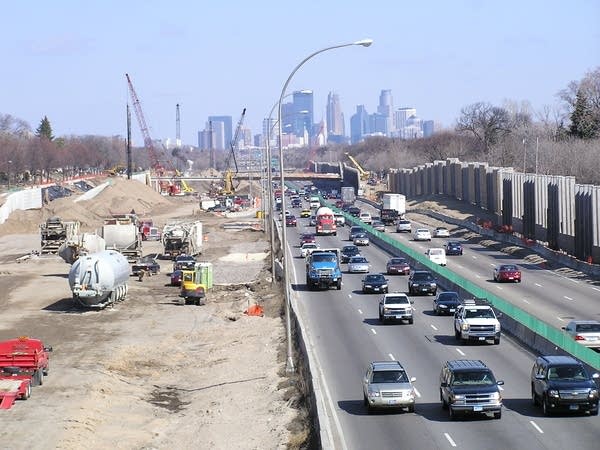MnDOT preps new plan to hire more women, minority contractors
Go Deeper.
Create an account or log in to save stories.
Like this?
Thanks for liking this story! We have added it to a list of your favorite stories.

The Minnesota Department of Transportation could soon increase the number of women and minorities working on Minnesota road and bridge projects.
MnDOT has repeatedly failed over the past decade to meet its goals for hiring women and minorities. But after two years of negotiations with critics and others to change the pattern, the department has a new hiring plan.
Under federal regulations, states and contractors building roads and bridges that include federal funding should aim to subcontract just under 9 percent of a winning bidder's work to women and minority-owned companies.
At MnDOT's headquarters in St. Paul, officials aim for a workforce in which 11 percent of the employees are minorities and 6 percent are women.
Turn Up Your Support
MPR News helps you turn down the noise and build shared understanding. Turn up your support for this public resource and keep trusted journalism accessible to all.
But critics complained the department has repeatedly failed over the years to meet the goals.
Community activists, later joined by state lawmakers, challenged the state agency to come up with a plan to do better.
The plan released this week came after two years of talks among more than two dozen people representing prime contractors, unions, women, community groups.
Among other strategies, there's a much shorter deadline for how soon prime contractors winning MnDOT work must come up with a women and minority hiring plan. Contractors must now submit a plan within five days.
The department's old practice was very loose, said Tim Worke, highway transportation director for Associated General Contractors of Minnesota. The influential trade group's members include the state's largest prime contractors.
"That time frame never had a cutoff date, and now this is a stringent five days," Worke said. "If you don't meet that means test the department will reject your bid and move to the second low bidder, so that's significant."
Minorities and women who were part of the talks said contractors have complained that there are not enough qualified minority and women applicants.
To address that issue, the plan has an agreement with contractors to expand their mentoring of women- and minority-owned subcontractors to help them learn the ropes.
It also asks that contractors work with individual workers.
Louis King, director of Summit Academy OIC, a Minneapolis construction training program, said he and others must do more to recruit women and minorities to their program to meet contractor demands.
"One hundred percent of the women who came through my training program last year got jobs in construction," said King, a prominent MnDOT critic. "That's the good news. The bad news is there were only 14 of them. So this year we're doing Women Wear Hard Hats Two because the industry is screaming for women."
The plan also seeks to help the hundreds of women- and minority-owned companies in Minnesota certified to do highway and bridge subcontracting.
Most of the companies, referred to as disadvantaged business enterprises, or DBEs, are very small. They're often short of front end cash.
Dianne Holte, CEO of Holte Contracting, a DBE in the Twin Cities suburb of Ramsey, said a new loan fund administered by an outside agency will help.
"That is now in place," said Holte, who participated in the talks. "It's a kind of a bridge gap funding for DBE's that are awarded MnDOT projects that maybe need up front assistance to cover their payroll or supplies or whatnot."
The new women and minority hiring plan that emerged from two years of negotiations is praised by nearly all involved including critics as progress.
However it's not clear if the plan will actually lead to much of an increase in the number of women and minorities.
MnDOT announces its 2011 road and bridge construction budget in the spring. But MnDOT officials say they expect spending to be lower than last year's record spending of $1.2 billion.
More will be known about how the hiring plan is working out by mid summer. That's when MnDOT takes a count of the number of construction workers, including women and minorities, on job sites.
Dear reader,
Political debates with family or friends can get heated. But what if there was a way to handle them better?
You can learn how to have civil political conversations with our new e-book!
Download our free e-book, Talking Sense: Have Hard Political Conversations, Better, and learn how to talk without the tension.





